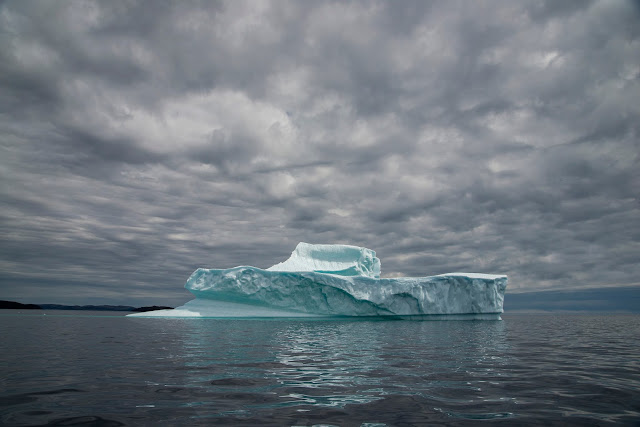Did you know that one of the best places in the world to photograph
icebergs is in iceberg alley off the coast of Newfoundland, Canada? We do, and
that’s why we have been running photography tours and workshops to photograph
these incredible structures for years.
On our tours you can live the life of a lighthouse keeper overlooking
“Iceberg Alley”.
Hear the Killer Whales’ call echoing off massive icebergs in your
private cove and awaken to the sounds of the Humpbacks calling you across vast
stretches of the North Atlantic. Explore the rugged landscape made famous in
“The Shipping News”, the Pulitzer prize-winning novel Judi Dench, Kevin Spacey
movie.
Feel the salt spray sting your face as you journey amidst the dolphins
and whales. As you land in the cove, imagine you are returning home to the sod
huts, thousands of years old, which lay undisturbed here. Forge a link with
ancient humans as you stand in the remains of their huts overlooking the cove
and picture the tiny beach coming to like as it was eons ago. Your home for a
portion of our trip lies atop the cliffs at the northern tip of this deserted
island.
The contrast of the rugged beauty of the island and the cozy luxury of
our Lighthouse Inn will bring back your childhood feelings of laying by the fire
as a storm raged outside. Imperceptibly your priorities in life will shift as
you become part of the primal connection between humans and the remote reaches
of the sea.
You are now in the best spot on earth to visit with whales and
icebergs. At dawn, be certain to introduce yourself to your only neighbors –
the whales migrating past your doorstep. An abandoned fishing village near the
lighthouse is a great walking destination today. Learn of the tragic but
romantic mass murder and suicide that inevitably lead to its demise. Our audio
app of the island offers interpretation as you wander.
View the “vast cathedrals of ice”. On sunny days they appear lit from
inside and on dull days other senses take over as they seem to grow in size.
Their chilling effect spreads to your mind and you feel a timeless empathy for
sailors who have dreaded these giants for millennia.
Icebergs are edges of glaciers that have broken off and slipped into
the ocean. Glaciers form on land by snow building up over thousands of years.
Each layer of snow compresses those below until, 60 to 70 metres down, glacial
ice forms. Glaciers then "flow" or "creep" towards the
ocean under their own weight, and eventually slip in. The glaciers of western
Greenland flow at speeds of up to seven kilometres a year, among the fastest
moving in the world. After slipping into the ocean, the bergs float in frosty
arctic bays melting slowly, if at all, until passing through the Davis Strait
and into the Labrador Current which carries them south into Iceberg Alley. Once
they head south, they rarely last more than one year.
Every year about 40,000 medium- to large-sized icebergs break off, or
calve, from Greenland glaciers. Only about 400-800 make it as far south as St.
John's, but these numbers can vary greatly from year to year. The chances of
seeing icebergs in a particular area depend on the number of bergs, wind
direction, oceans current and temperatures, and the amount of sea ice, or pack
ice.
We monitor the icebergs every year and work with locals to predict when
and where they will wail past our locations… and time our tours appropriately.
And just think, almost 90% of an iceberg is under water, hence the
phrase “tip of the iceberg.” Its maximum width under water is 20% to 30% larger
than you can see at the surface. The average depth, or draught of an iceberg,
is slightly less than its apparent length above water.
How big can these icebergs get? Well, in the Northern Hemisphere, the
largest iceberg on record was encountered in 1882 near Baffin Island. It was 13
km long, 6 km wide, and was about 20 m above water. It weighed over 9 billion
tonnes – enough for everyone in the world to drink a litre of water a day for
more than 4 years. Icebergs from Antarctica can be many times larger. In 1987
an iceberg, with an area of 6,350 sq. km, calved from the Ross Ice Shelf. It
weighed about 1.4 trillion tonnes and could have provided everyone in the world
with 240 tonnes of pure drinking water.
Icebergs can vary greatly in size, ranging from very large – greater
than 10 million tonnes and hundreds of metres long – to large, medium, and
small bergs. The smallest are termed “bergy bits,” which are the size of a
small house, and “growlers,” which are the size of a grand piano. These smaller
pieces are hazardous to ships because radar may not pick them up as they bob up
and down among the waves. The average weight for a Grand Banks-area iceberg is
100,000-200,000 tonnes – about the size of a cubic 15-storey building.
Why don’t you come see for yourself, we run tours to Newfoundland every
year… but not just for the icebergs… we see humpback whales, a variety of
seabirds, and some of the most photogenic landscapes Canada has to offer.
To see our 2016 tour, please visit this link.
http://northof49photography.com/new-page-1
To See our 2017 tour, please visit this link.
http://northof49photography.com/2017-tour-of-newfoundland


No comments:
Post a Comment